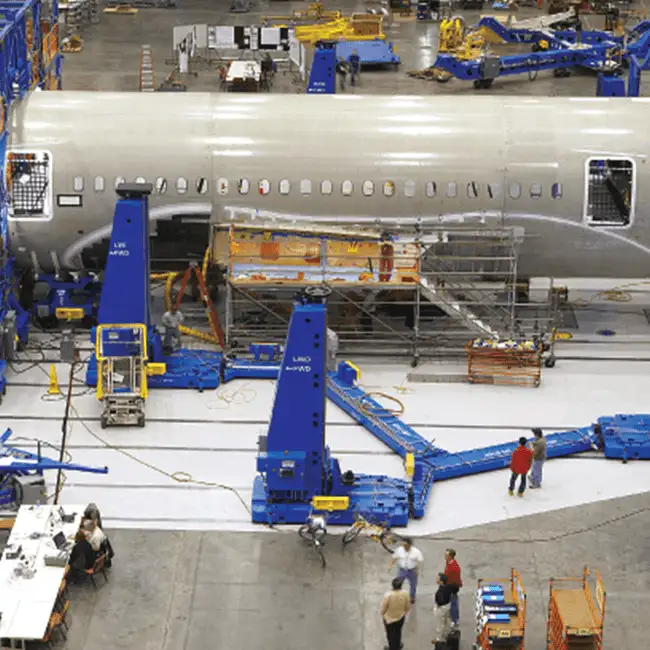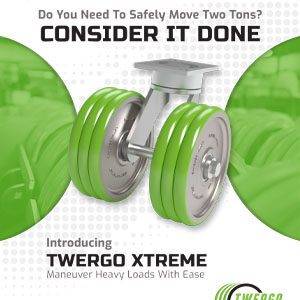

When working on large aircraft, tooling stands are utilized for maintenance and repair. For one worldwide aerospace corporation, the tooling stand being used weighed 14,000 lbs. At this significant weight, it required several people, and several minutes, to move it.
These stands would be stationed in place, and every 2 weeks, when a stand needed to be moved, it would require 5-6 workers to move it. The stand would have to be moved away from the aircraft so the aircraft could be moved to the next location. Then the 5-6 people would have to move the stand back into the station for the next aircraft to be built.
The constant moving of the stands was a huge waste of resources, both from taking so much manpower to move them and the amount of time it took. And the 7-ton stand wasn’t easy to move, which ran the risk of injuries if everyone wasn’t pushing together.
 The company believed that they would have to go with a much bigger wheel to reduce rolling resistance and make it easier to move the stand. After consulting with Caster Concepts, Twergo Xtreme casters were chosen.
The company believed that they would have to go with a much bigger wheel to reduce rolling resistance and make it easier to move the stand. After consulting with Caster Concepts, Twergo Xtreme casters were chosen.
A Twergo® Extreme caster setup consists of dual Twergo wheels, which are a split wheel style with a radius. The dual-wheel design reduces overall height while still offering the advantages of handling more weight and easier movement.
Each wheel on the Twergo Xtreme rotates independently. This setup reduces scrubbing while swiveling and helps the swivel section maneuver easier. Because each wheel spins independently, the wheels can rotate in either direction and spin at any rate, which minimizes friction when the wheels are moving and maneuvering. Each Twergo set is wider than a normal dual wheel to help spread the load over many small contact areas while still being able to handle a significant weight capacity.
With this new setup, the tooling stand only required 2 people to move it into position. This was a 60% reduction in the number of workers it took to move the stand in and out of the workstation. This significant reduction in personnel required to help move the cart meant that fewer workers had to stop their normal duties to move the cart, which helped with the production flow. And since the cart was significantly easier to move, it also reduced the risk of a workman compensation claim – which, on average, could easily be $40,000 per claim.